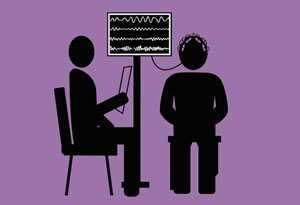Mini-Clinic: Alternative Medicine Therapies

Photo: Artboximages/Getty Images
74 percent of medical students say Western medicine would benefit by integrating more alternative medicine therapies and ideas. At least 42 U.S. medical schools currently offer some integrative medicine training for students.
1. BiofeedbackIf you want to stay healthy, it's no longer enough to eat salad, move around a bit, and hope for the best. Increasingly, we depend on hard data to let us know if we're on the right track—wearing pedometers when we walk, checking our blood sugar if we have diabetes. Which is one reason why biofeedback—a nearly 50-year-old therapy that monitors (and trains you to control) involuntary functions—is suddenly being prescribed to treat everything from migraines to high blood pressure. Biofeedback is fairly simple: Electrodes attached to your skin measure physical processes like heart rate or muscle tension and wire the data to a computer. Using relaxation exercises, you can learn to control these processes, which in turn can improve your well-being—for instance, decreasing muscle tension in order to short-circuit a headache.
In a world filled with iPods, video games, and laptops, biofeedback devices fit seamlessly into everyday life. "The interactive aspect is appealing for patients who are used to engaging with technology," says Colleen Clemency, PhD, a psychologist in Massachusetts. Biofeedback also satisfies the modern desire for instant gratification. "There's no need to wonder if the exercises are producing any effect," says Emily Shaules, 34, who used biofeedback to ease the pain of fibromyalgia. "The lines on the screen tell the whole story. Instantly." —Paige Greenfield
Next: A prescription-free cure for insomnia
Source for statistic: Complementary, Alternative, and Integrative Medicine Attitudes Questionnaire



